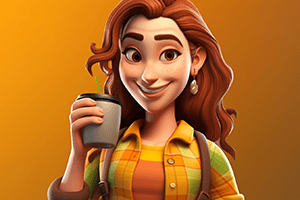
The Science Behind Pour Over Chemex: Understanding the Chemistry of Coffee Brewing
Discover the chemistry behind pour over Chemex and how it affects the taste and aroma of coffee. Learn the science behind coffee brewing and how it can enhance your daily cup.
The Science Behind Pour Over Chemex: Understanding the Chemistry of Coffee Brewing
If you're a coffee enthusiast, then you probably already know that brewing coffee is an art that involves science. While there are many different methods for brewing coffee, the pour-over Chemex method has gained popularity thanks to its simplicity and unique flavor profile. In this article, we'll delve into the science behind pour-over Chemex and help you understand the chemistry of coffee brewing.
What is Pour-Over Chemex?
Pour-over Chemex is a manual coffee brewing method that involves pouring hot water over coffee grounds that are held in a paper filter. The water drips through the filter and into a glass carafe, creating a clean, smooth cup of coffee. The Chemex coffee maker was invented in 1941 by a chemist named Peter Schlumbohm, who believed that coffee brewing was a scientific process that could be improved through careful design.
The Chemistry of Coffee Brewing
The chemistry of coffee brewing is complex and involves several different chemical reactions. When coffee is roasted, it undergoes a process called pyrolysis, which causes it to release several volatile compounds. These compounds, which include aldehydes, ketones, and organic acids, are responsible for the flavor and aroma of coffee.
When hot water is poured over coffee grounds, it extracts these volatile compounds and dissolves them in the water. The coffee's flavor and aroma are therefore a result of the specific compounds that are extracted during the brewing process.
The Role of Water Temperature and Grind Size
The temperature of the water used to brew coffee is critical to the final flavor of the coffee. Water that is too hot can cause the coffee to taste bitter, while water that is too cold can result in a weak, under-extracted cup of coffee. The ideal temperature for brewing coffee is between 195 and 205 degrees Fahrenheit.
The size of the coffee grounds also plays a crucial role in the brewing process. Coffee grounds that are too fine can result in over-extracted coffee that tastes bitter, while coffee grounds that are too coarse can result in under-extracted coffee that tastes weak. The ideal grind size for pour-over Chemex is medium-fine, which allows for a slow and even extraction of the coffee's flavor and aroma.
The Importance of Water Quality
The quality of the water used to brew coffee is often overlooked, but it can have a significant impact on the final flavor of the coffee. Water that is too hard or too soft can affect the extraction of the coffee's flavor compounds, resulting in a less than optimal cup of coffee.
It's important to use high-quality water that is free from impurities such as chlorine or minerals that can affect the taste of the coffee. If you're unsure about the quality of your tap water, consider using filtered or bottled water instead.
The Bottom Line
Pour-over Chemex is a simple yet effective method for brewing coffee that emphasizes the importance of water temperature, grind size, and water quality. By understanding the science behind coffee brewing, you can improve your brewing technique and create a delicious cup of coffee every time.
